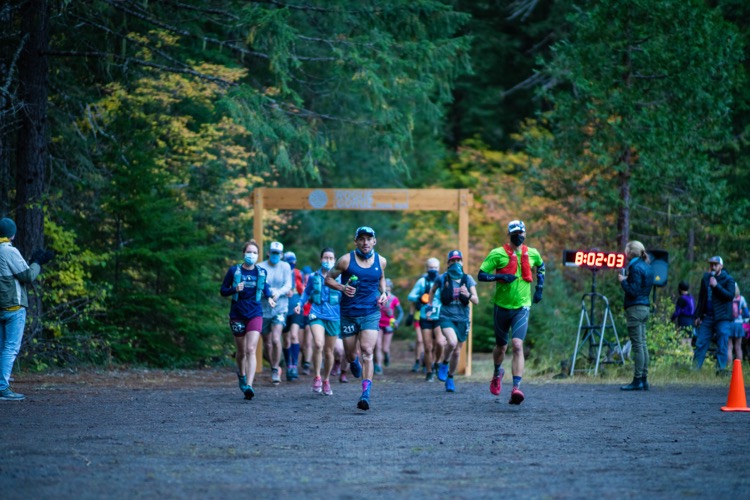The buildup racing can feel long and exhausting, not to mention the actual duration of race season, and it’s no wonder why plenty of ultrarunners are feeling eager to take a break this time of year. Which is why it’s a good idea to have broad goals in mind during this period of stepping away from formal training.
Autumn is typically a superior time for outdoor adventures as the heat of summer begins to dissipate. Additionally, ultrarunning is a demanding sport, both physically and psychologically, and we spend a lot of time on the trails moving through space, thinking about what foods might be the best type of fuel and what intensity should be integrated at different times of the year. For most runners, running is a hobby. We have regular jobs, relationships and other commitments. It’s not surprising that many runners and ultrarunners meet the end of the season with some fatigue and a desire for some sort of a shift away from the demands of training. It’s important to tune into that feeling rather than push through month after month. Trail and ultrarunning are delightful, but it’s also important to take time to rest and allow the body and mind a period of rejuvenation.
Taking a break from running doesn’t mean being sequestered inside; there are still many avenues to enjoy the fall. This can be as simple as a switch to hiking or perhaps, backpacking. Other athletes may transition to cycling or spend time in the water. Altering the way your body moves through space is a great way to allow it to heal and become stronger at the end of an ultrarunning season. Simultaneously, this movement will allow you to maintain a basic level of fitness as it preserves engagement in an active lifestyle.
This transitional season can also be a great opportunity to address areas that may have been weaknesses during the racing season. This is a good time to experiment with a few different pairs of shoes if you were experiencing minor foot or lower extremity injuries, or develop the skillset for using trekking poles. Cooler temperatures can also facilitate a wider array of foods that may not agree with your palate and stomach when it’s hot. Lower air temperatures usually provide more blood flow to a runner’s GI tract which, in turn, allows for easier and faster digestion. If you rely on one or two simple foods during the summer, fall is a great time to broaden the type of foods you use for fuel, and this can be done when hiking, cycling or participating in other non-running activities. As the days become shorter, it’s also an opportune time to test lighting equipment for future events in which headlamps, waist lights and other means of navigating during the nighttime are necessary. Ultimately, autumn is a terrific time to assess what went well during your racing season and what areas may need improvement. It can be an opportunity to improve skills and research new equipment, move in new ways and try fueling strategies that may benefit you for the upcoming year.
Adhering to a formal training plan for months at a time can be mentally exhausting. Often, it’s not until after the final race that trail and ultrarunners have a chance to take stock of their mental strain. Stepping away from running or, at the very least, from a defined approach to training, can offer a significant liberation from the hyper focus that accompanies training agendas. Allowing time for this mental break usually results in a period of mental rejuvenation. In turn, the excitement for planning the next race season tends to develop. The absence of a training schedule can also allow for a heightened intuitive approach to movement. Runners may become aware of strengths, soreness, imbalances or asymmetries when there is no specific goal attached to an outing. By simply exploring one’s physical and mental state without an anticipated outcome, we can discover insights that may otherwise remain hidden.

